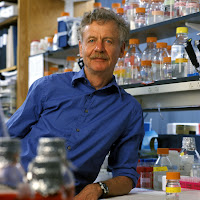Since its first use in 1910, the term synthetic biology has been a dream of many biologists. It has now become true.
Timeline of Synthetic Biology
All timelines are subjective. This one is no exception. We thank however the contributing authors from opennetware for this good work.
In his book Theorie Physico-Chimique de la Vie et Generations Spontanees, Stephane Leduc, a French biologist stated,
Leduc was referring to the groundbreaking work begun by Friedrich Wohler, a German chemist, who in 1828 discovered how to produce urine without the use of a living kidney. This was viewed as a contraindication to vitalism, which at that time was a very popular view that living things were endowed with a special life force. Biotechnology, another name for synthetic biology further progressed with the work on fermentation carried on by the famous chemist Louis Pasteur, which greatly helped preserve foods, especially milk. In 1928, Chaim Weizmann was able to produce corn starch which he further processed so as to produce acetone which was essential to the manufacture of explosives during World War I for Great Britain.Timeline of Synthetic Biology
All timelines are subjective. This one is no exception. We thank however the contributing authors from opennetware for this good work.
In his book Theorie Physico-Chimique de la Vie et Generations Spontanees, Stephane Leduc, a French biologist stated,
Biology must evolve as other natural sciences, in order, and be descriptive, analytic and synthetic. Just as synthetic chemistry has not begun by the synthetic organic products more complex, synthetic biology could not begin with the production of living beings similar to the current living beings, having all the attributes and qualities. [our translation]
See These Pages: FUTURISM TECH TRENDS SINGULARITY SCIENCE CENSORSHIP SOCIAL NETWORKS eREADERS MOBILE DEVICES
 |
| Kindle eBook Common Tech Problems, Windows, OS X |
"The first law of technology says that when a truly transformative advance occurs in science, inevitably there will be, in the short term, an overly optimistic set of predictions about the consequences. But in the long term...the consequences will turn out to be underestimated."
Frances Collins
Frances Collins
Biotechnology led to the discovery of penicillium by Alexander Fleming which saved millions of lives during World War II. These are universally agreed upon good things that biotechnology has done. From these rather small beginnings, a fledgling industry has emerged with plans for nothing less than the redesigning of mankind and other living things. A working definition of synthetic biology can be stated thus,
Synthetic biology is a) the design and construction of new biological parts, devices and systems and b) the re-design of existing natural biological systems for useful purposes.”
1970 - The first restriction enzyme created by Daniel Nathans, Werner Arber and Hamilton O. Waclaw Szybalski, commenting on the discovery of restriction enzymes, stated this discovery "...has led us into the new era of synthetic biology where not only existing genes are described and analyzed but also new gene arrangements can be constructed and evaluated." Since then mathematical models of small biological systems have been built to test the effects of drugs or medical treatments, without risking human life. The best known model is by Micheal Elowitz and is called the Repressilator. For those who are rusty in their understanding of restriction enzymes, we provide a concise video explanation. If you cannot see the embedded video, here is the link: http://youtu.be/KVnFBCzg8Ms.
1973 - The first transgenic organism created by Herbert Boyer and Stanley Cohen. In their case it was a transgenic bacteria. Boyer went on to found the now famous and influential company Genetech in 1976. We include a video that explains the process. If you cannot see the embedded video, here is the link: http://youtu.be/GNMJBMtKKWU.
 |
| Rudolf Jaenisch circa 2003 |
As of 2007, this engineering of mice resulted in the famous "supermouse." By the modificiation of one gene, this mouse could run much longer and faster than a regular mouse, have children even it it's old age, etc. Here is a video showing you the amazing capabilities of this mouse. If you cannot see the embedded video, here is the link: http://youtu.be/RcXuKU_kfww.
1977 - First DNA genome is sequenced - a bacteria by F. Sanger, and others.
1990 - Human Genome Project begins.
1995 - First bacterial genome sequenced.
1996 - First mammal cloned the famous Dolly from differentiated cells
2002 - the first brain/computer interface tested on monkeys which enabled them to move a ball around on a screen through implanted electrodes.
2003 - The first biotech pet the GloFish appeared in the North American market. It was bred to detect water pollutants. It is fluorescent by the adding of one gene in its genome.
If you cannot see the embedded video, here is the link: http://youtu.be/0WN_YQUiWtU.
2003 - Human Genome Project finished. This accomplishment could never have been done without the explosive growth of computer processing and storage space.
If you cannot see the embedded video, here is the link: http://youtu.be/lY2oua8wpDc.
In part 1b of this series we will continue with the timeline until the present.




No comments:
Post a Comment